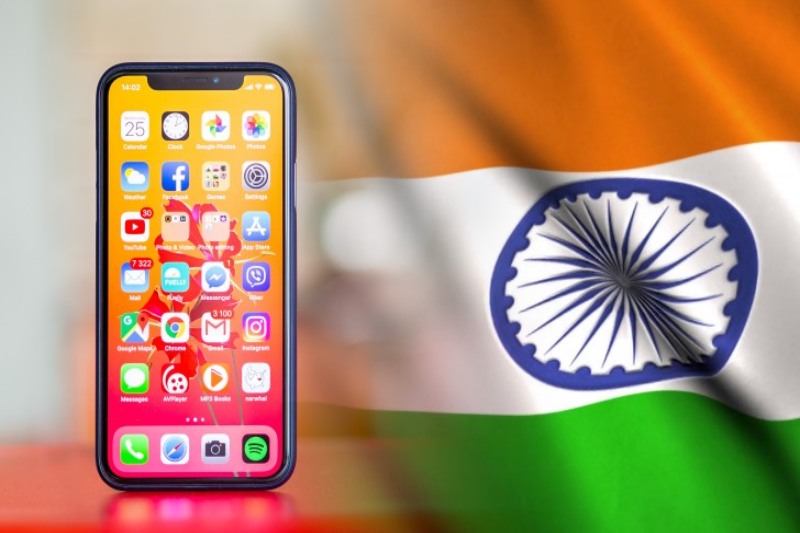India is the world’s second-largest mobile phone market, after China. For this reason, it is a crucial market for numerous mobile phone manufacturers. In India, Xiaomi was the top mobile phone brand for an extended period of time. But it appears that the business is starting to lose ground in the Indian market. According to Counterpoint’s most recent research study, which was made available through its Monthly India Smartphone Tracker, shipments to India in 2017 stayed steady at 152 million devices.After a sluggish start to the year in 2023, the market only began to recover in the second part of the year. The poor start to 2023 was caused by “ongoing macroeconomic turbulence leading to low demand and an inventory build-up,” according to Counterpoint. Nonetheless, the second half was superior thanks to 5G improvements and massive holiday sales.
The top five mobile phone brands in India are Realme, Oppo, Vivo, Xiaomi, and Samsung. With a share of 18% in 2023, Samsung leads the list and takes the top spot for the first time since 2017. In 2023, Vivo holds a 17% market share, ranking second, and a 33% share in the entry-level high-end segment. In 2023, Xiaomi dropped to third place, but in the fourth quarter, with an 18.3% share, it took the lead. Since 2017, Xiaomi has dominated the Indian mobile phone industry. Only in the fourth quarter of 2022 did Samsung overtake its rival for the top spot, a position it held last year.
Despite not being present in India’s top five brands, Apple increased its revenue. Apple became the first firm to lead the list of natural yearly revenue when its shipments surpassed 10 million.
REMARKS FROM COUNTERPOINT EXPERTS
Shilpi Jain, a senior research analyst at Counterpoint, examined the characteristics of the Indian mobile phone market and stated,
“Driven by the premium segment’s growth and 5G upgrades, India’s smartphone market grew 25% YoY in Q4 2023 after declining for a year. The elongated festive season further aided this growth, as the availability of steep discounts, easy financing schemes and lucrative promotions boosted demand. For many OEMs, the key focus during the year was on taking 5G to the lower segment driven by a shift in consumer preferences. 5G smartphone shipment share crossed 52% in 2023, growing 66% YoY. The last quarter (October-December) exited the market with healthy inventory levels compared to last year, setting the right tone for growth for next year. We believe the market will grow by 5% YoY next year driven by premiumization, diffusion of 5G in lower price bands and better macroeconomic conditions.”
Research Analyst Shubham Singh spoke on the brand-level assessments and competitive landscape.
“Samsung led the market in 2023 with an 18% share driven by a strong performance of the A series, aggressive marketing in offline, and focussed approach in the premium segment. vivo ranked second with a 17% share and led the affordable premium segment in 2023 driven by CMF (Colour, Material, Finish)-focused V29 series in offline and T series in online. Xiaomi slipped to the third spot in 2023 but captured the top spot in Q4 2023 driven by its strategy to launch 5G phones in the affordable segment, offline expansion and a leaner portfolio.”
FLAGSHIP INDUSTRY
Devices priced over INR 30,000 (~$360) fall into the flagship category, also known as the premium segment. According to the report, more Indians are increasingly purchasing flagship phones. The market experienced a 64% annual rise, with consumers choosing to purchase more expensive phones.
Because it was able to sell 10 million premium phones and all of its products were flagships, Apple was able to make more money in India. Furthermore, the corporation gave the Indian market a lot of attention. There was “robust demand for both its latest and older iPhones,” according to Counterpoint. In addition, Apple held frequent sales and opened retail locations in India. Its offline shipments increased as a result of this.
OTHER BRAND NAMES THAT FAIRLY WELL
Other mobile phone brands performed fairly well in India last year, even though they weren’t in the top five, except from Apple. OnePlus is one of them. The Chinese firm saw year-over-year growth of 33% thanks to a stronger product line and respectable flagship sector. Transsion Holdings performed admirably as well, increasing 31% year over year using a hybrid channel strategy. With the Infinix brand, the business concentrated on the flagship market as well. It also employed unique marketing techniques, such as charging under $120 for a smartphone with an OLED display and 8GB of RAM.Google saw a staggering 111% rise in shipments, compared to 36% and 13% for Lava and Motorola.
Topics #apple #INdian #MOBILE PHONE #Samsung #Xiaomi










